Ilkeston - The Trees
Of Victoria Park
w/e 15 November 2009
All this week's pictures were taken
with a Kodak DX6490

Since uploading Part 01 of this series I have resolved
the discrepancies between the numbers shown on a Council leaflet
and the information posts adjacent to the trees in the park.
See the Introduction for more.
The identification to each tree in the format (L-/P-) refers
to the leaflet number and the identification post number.
Part 04 - On the Manners Road side
The final part (for the time being) looks at five more trees
on the Manners Road side of Victoria Park.
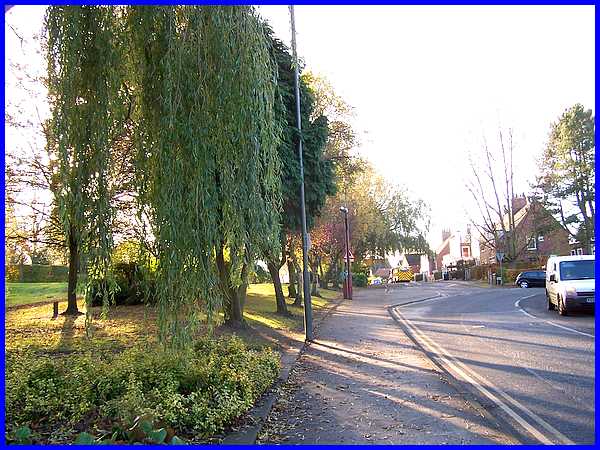
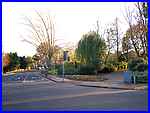  Since
the last part in this series a month ago, the flower bed at the
end of Bristol Road (left) has benefited from its winter planting
but will need a little more time before it can be seen to full
potential. We begin this part at the side of the Lombardy Poplar
(right) seen here in silhouette against a low sun and in the
image above, showing Manners Road from close to the Poplar, the
first of the remaining five identification posts is visible towards
the left of the picture. Since
the last part in this series a month ago, the flower bed at the
end of Bristol Road (left) has benefited from its winter planting
but will need a little more time before it can be seen to full
potential. We begin this part at the side of the Lombardy Poplar
(right) seen here in silhouette against a low sun and in the
image above, showing Manners Road from close to the Poplar, the
first of the remaining five identification posts is visible towards
the left of the picture.
|

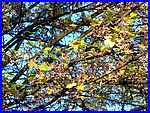 That
post stands at the foot of a Field Maple (L14/P17) seen here
from a position within the park and with a backdrop of the Victoria
Leisure Centre. At only 15m high when mature, this native species
is a common sight in woodlands and hedgerows but doesn't look
at all out of place in this park setting either. The Field Maple
displays small green flowers in the summer months followed by
winged seeds. Although not all the leaves have dropped, we've
probably missed the best of the golden colour that they turn
during autumn but come winter the tree should be distinguishable
by corky twigs. That
post stands at the foot of a Field Maple (L14/P17) seen here
from a position within the park and with a backdrop of the Victoria
Leisure Centre. At only 15m high when mature, this native species
is a common sight in woodlands and hedgerows but doesn't look
at all out of place in this park setting either. The Field Maple
displays small green flowers in the summer months followed by
winged seeds. Although not all the leaves have dropped, we've
probably missed the best of the golden colour that they turn
during autumn but come winter the tree should be distinguishable
by corky twigs.
|

A little further along Manners Road and again with the Victoria
Centre as a backdrop is the next tree of note. This is the Common
Beech (L15/P18) another native tree and this species grows to
double the height of the Field Maple. It is widely planted in
parks and gardens and is also a common sight in woods.
|
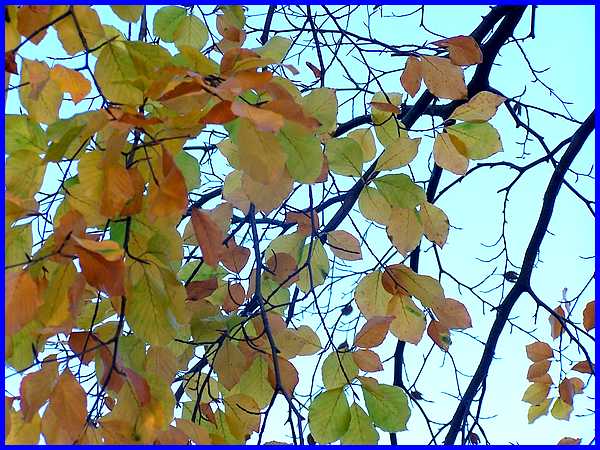
Although it has now lost most of its leaves those that still
remain give an indication of the dense shade they create during
the summer. The tree produces "masts" in autumn that
are much sought after by squirrels and birds. I did not see any
on this visit but squirrels are often to be seen scampering through
the park.
|
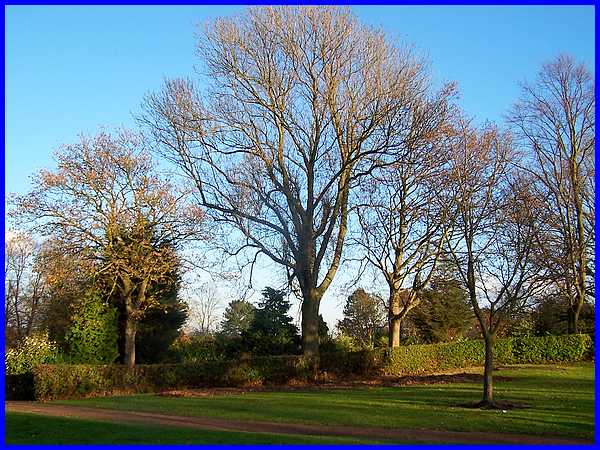
I was a little apprehensive when I discovered the discrepancies
between the leaflet and the posts and that this series would
run into November that all that would be left to see would be
skeletal-like trees at this time of year. My fears were not unfounded
particularly with the next tree, the Common Ash (L16/P19), the
largest in this group seen here from near the children's play
area in the park. Unfortunately this time round we've missed
the attractive leaves that are among the last to open in spring
and the first to fall in autumn. (Note to self - come back
next year).
|

By contrast the fourth tree in this section, a Turkey Oak (L17/P20),
is still covered with a fine display of leaf growth. The species
was introduced to Britain as a source of timber but the climate
meant that the wood was too brittle to use and now it is grown
for ornamental purposes only. It is a quick growing species and
soon attains its mature height of 30m.
|
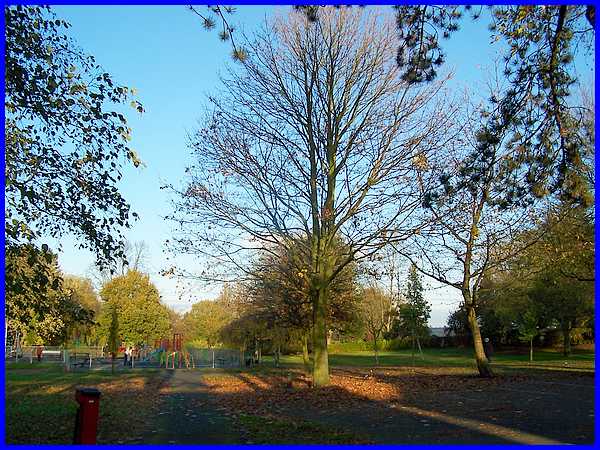
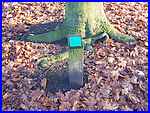 I've
always associated Maple trees with Canada but the final tree
in our tour of the park, unlike the native Field Maple, was introduced
to this country in the seventeenth century and the name suggest
it came from Europe. This is the Norway Maple (L18/P21), a 20m
high variety that is a popular tree in parks and on streets as
it is very tolerant of poor compacted soils and pollution. This
is another example where the tree has already lost its leaves
but most of them have settled around the base of the tree and
the information post (left) where their well-known shape can
easily be distinguished. I've
always associated Maple trees with Canada but the final tree
in our tour of the park, unlike the native Field Maple, was introduced
to this country in the seventeenth century and the name suggest
it came from Europe. This is the Norway Maple (L18/P21), a 20m
high variety that is a popular tree in parks and on streets as
it is very tolerant of poor compacted soils and pollution. This
is another example where the tree has already lost its leaves
but most of them have settled around the base of the tree and
the information post (left) where their well-known shape can
easily be distinguished.
|

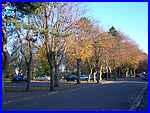 That completes
our circuit as we are now near to Drummond Road (right) and I
am pleased that none of the trees identified on the leaflet or
by the information posts have yet had to suffer the same fate
as these two either side of the path that leads back to the centre
of the park. I'm sure it is a necessary evil but it is always
so sad when pollarding seems so brutal and the new growth is
still awaited. That completes
our circuit as we are now near to Drummond Road (right) and I
am pleased that none of the trees identified on the leaflet or
by the information posts have yet had to suffer the same fate
as these two either side of the path that leads back to the centre
of the park. I'm sure it is a necessary evil but it is always
so sad when pollarding seems so brutal and the new growth is
still awaited.
Victoria Park does not cover an excessively large area - that's
Bristol Road in the distance, Manners Road is just behind and
Drummond Road to the right - but parks are green open spaces
that act as the lungs of urban areas helping clean the air that
we breath and they provide peaceful havens amid the surrounding
noise and turmoil. For those reasons alone they are well worth
looking after and enjoying. Victoria Park - we'll be back.
|

